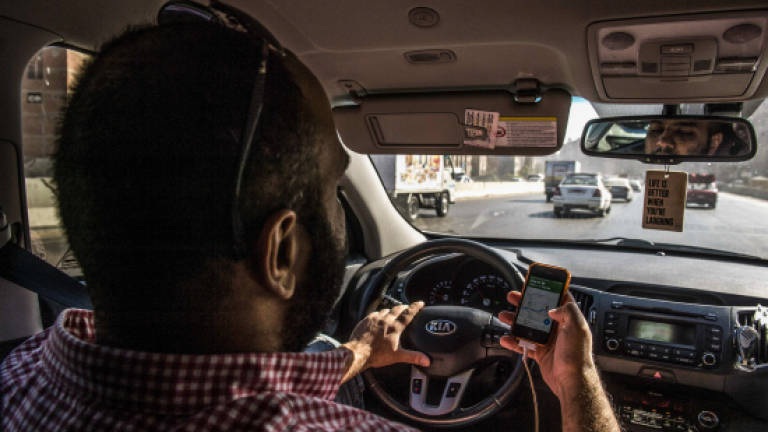Cairo traffic poses daily test of survival

IN AN endless cacophony of car horns, Mostafa Ekram each day confronts the frenzy of Cairo's traffic jams: pedestrians darting out into the street, swerving tuk-tuks and even donkey carts.
At the wheel of his SUV, in the heart of Egypt's bustling capital, he doesn't bat an eyelid as he narrowly dodges a black tuk-tuk, a three-wheeled vehicle, driving in the wrong direction.
It's an everyday occurrence in Cairo, a sprawling metropolis of 20 million inhabitants where traffic laws are rarely respected and traffic jams can grind on well into the night.
"I feel like a prisoner in a car looking for an escape," says Ekram, a young sales manager. "Traffic jams use up your energy and your time."
If a stretch of road is clear, drivers, often with a mobile phone in one hand, race in the streets, competing for speed, in the general absence of traffic lights and pedestrian crossings.
Two years ago, Egyptian authorities adopted an ambitious plan to instal cameras at all intersections – 80% completed so far – and radars on roads most prone to accidents.
The cause of the chaos on the roads of Cairo is clear to traffic police official Emad Hammad.
"The main problem is the citizens' attitude," he says, giving the common example of parking in no-parking areas that contributes to the congestion.
With complete disregard for other motorists, drivers will often slow down to ask directions or to greet a friend, to exchange cigarettes or money.
Public transport
According to official figures, 3.3 million cars ply the roads of Cairo. In spite of a ring road, intertwining highways and flyovers, the bottlenecks persist.
Congestion cost Egypt around US$8 billion (RM35 billion), or 3.6% of GDP, in 2011, according to the World Bank, which estimates the figure will more than double by 2030.
The high economic losses were calculated on the basis of delayed deliveries and fuel wasted in traffic jams.
Ossama Okail, a university professor specialising in traffic, doubts that the measures proposed by the authorities will bring an end to the jams.
"The best remedy is high-quality public transport ... to convince people to use them instead of using their cars," Okail says.
Regardless of the costs, those with the means still opt to drive their own car or take a taxi rather than use public transport.
"A bus can transport 50 passengers, which would normally take 40 cars to do," says Okail.
The authorities also plan to extend the Cairo metro, whose three existing lines are used by as many as 3.5 million commuters a day.
Most public buses, in contrast to the relatively new metro, are worn out, rickety, uncomfortable and always crowded.
Escape the jams
"If public transport were better origanised ... I would have abandoned my car," says engineer Mohamed Mohamed. Still, "when I can, I take the subway".
And while waiting for change, Heba Essam, an employee of a multinational corporation, has found another solution to escape the traffic jams: she works two days a week from home.
Driving to work and back takes four hours.
"I'm already tired by the time I arrive at work in the morning," says the 36-year-old, who always drives in fear of accidents on Cairo's roads.
In 2015, some 14,500 accidents blighted Egypt's roads, resulting in 6,000 deaths and 19,000 injuries, with an average of 17 deaths per day.
More and more Cairo residents are turning to motorcycles to weave their way through traffic and cut journey times, such as Mohamed Abdel-Wahed, 34.
"Now I get home in 45 minutes, I can sleep a bit before working out or going to meet friends," Abdel-Wahed, who owns an import-export company, says with a smile. — AFP